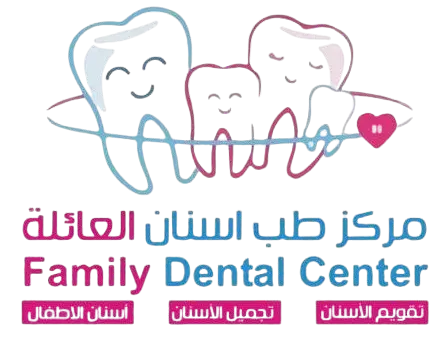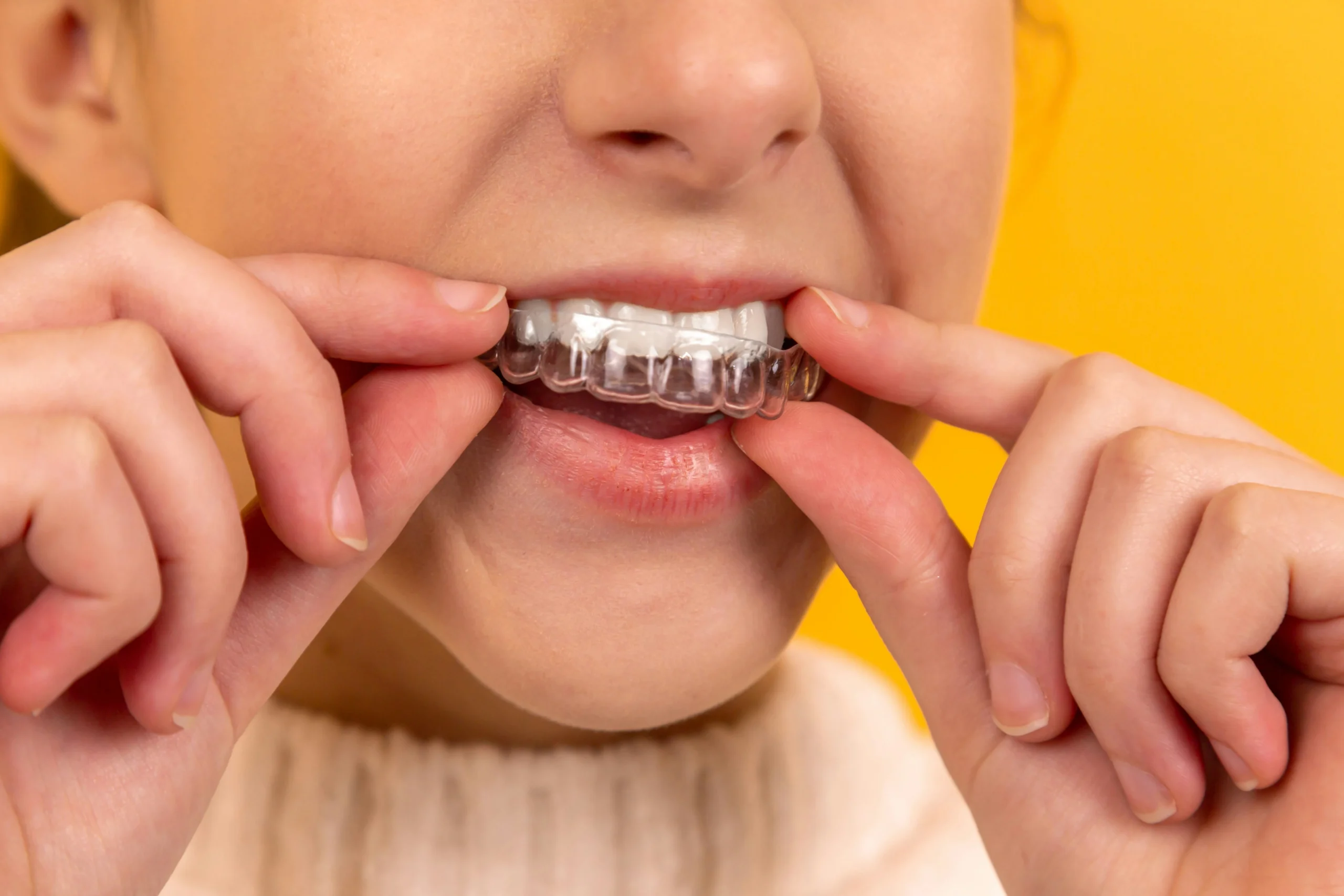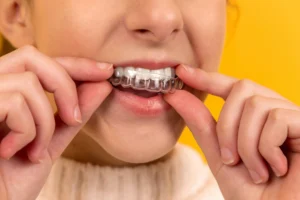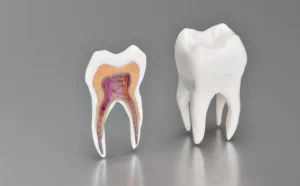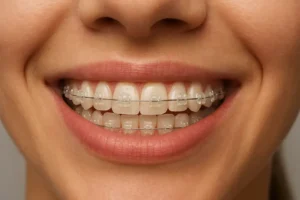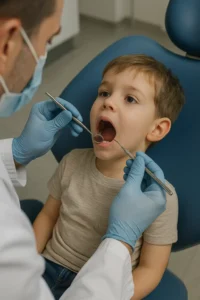Are Invisalign worth it? This is a question many people in Oman ask when considering options to straighten their teeth. Invisalign, the clear aligner system, has become increasingly popular worldwide as an alternative to traditional metal braces. Patients are often drawn to its discreet design, flexibility, and comfort, but they also wonder if the results truly justify the cost and commitment. In this article, we will explore the benefits, limitations, costs, lifestyle factors, and real patient experiences in Oman to help you decide whether Invisalign is the right choice for you.
Benefits of Invisalign over Braces
When people begin searching for teeth-straightening options, one of the first questions they often ask is whether Invisalign is truly worth it compared to traditional braces. While both methods aim to improve dental alignment and overall oral health, Invisalign has several benefits that make it particularly appealing, especially for adults and young professionals in Oman who value comfort, aesthetics, and lifestyle flexibility.
Aesthetic advantages of clear aligners
One of the strongest reasons patients choose Invisalign over braces is appearance. Unlike traditional metal brackets and wires, Invisalign aligners are made from clear, medical-grade plastic that is almost invisible when worn. This allows patients to smile, speak, and interact socially without the self-consciousness that often comes with visible metal braces. For professionals, students, or individuals who attend social events regularly, this discreet quality is a major advantage and makes orthodontic treatment feel less intrusive.
Easier oral hygiene and cleaning
Oral hygiene can be a challenge with traditional braces because food particles and plaque often get trapped around brackets and wires. With Invisalign, the aligners are completely removable, making daily brushing and flossing much easier. Patients can maintain their regular dental care routine without worrying about special cleaning tools or the risk of developing stains and cavities around the brackets. This convenience not only saves time but also supports better long-term dental health.
Flexibility in eating and drinking
Another practical benefit is the freedom Invisalign offers at mealtimes. Traditional braces usually come with a long list of food restrictions—patients are advised to avoid sticky, crunchy, or hard foods that can damage brackets or wires. In contrast, Invisalign aligners can be removed before eating, meaning patients can continue enjoying their favorite meals without limitations. Whether it’s Omani dates, traditional dishes, or simply popcorn at the cinema, Invisalign does not interfere with food choices. The only requirement is to clean teeth before putting the aligners back in place, which also promotes healthier habits.
Comparable effectiveness to traditional braces
While some people assume clear aligners may not be as effective as braces, research and patient results prove otherwise for many common orthodontic cases. Invisalign is highly effective in treating crowding, spacing, mild to moderate bite issues, and misalignment. Advanced technology, such as 3D imaging and computer-generated treatment plans, allows orthodontists to predict and monitor progress with precision. Although very complex cases may still require braces, Invisalign delivers results comparable to traditional methods in most situations—often with greater comfort and fewer clinic visits.
In summary, the advantages of Invisalign go beyond just looks. From confidence in your smile to better oral hygiene, dietary freedom, and reliable outcomes, Invisalign provides a modern alternative to braces that aligns with the lifestyle and expectations of many patients in Oman. These benefits explain why so many people are now asking: are Invisalign worth it
Limitations and Downsides
While Invisalign has many advantages, it is important to consider the limitations and downsides before deciding if it is the right treatment option. Asking the question are Invisalign worth it requires looking at both the positive and negative aspects. Understanding the potential challenges helps patients in Oman make an informed decision about whether Invisalign matches their dental needs, budget, and lifestyle.
Not suitable for severe orthodontic cases
One of the biggest limitations of Invisalign is that it is not designed for every dental problem. Clear aligners are highly effective for mild to moderate misalignment, crowding, spacing, and bite issues. However, severe orthodontic cases—such as major jaw discrepancies, rotated teeth, or complex bite corrections—may require traditional braces or even surgical intervention. For these cases, braces still remain the gold standard because wires and brackets can apply stronger and more controlled pressure on the teeth. Therefore, a professional orthodontic consultation is crucial to assess whether Invisalign is appropriate.
Requires strong patient compliance
Unlike braces that are fixed to the teeth, Invisalign aligners are removable. This is both a benefit and a drawback. To achieve the desired results, patients must wear the aligners for at least 20 to 22 hours each day. Skipping wear time, forgetting to put them back after meals, or frequently removing them can delay progress or reduce the effectiveness of treatment. This requires a high level of self-discipline, especially for younger patients or busy adults. Without consistent compliance, the treatment outcome may fall short of expectations, making Invisalign less effective than braces.
Potentially longer treatment time
In some cases, Invisalign may take longer to achieve results compared to braces. Because the aligners apply gentler, gradual pressure, complex movements can require additional months of treatment. While modern Invisalign technology has improved efficiency, certain dental issues still respond faster to braces. Patients need to understand that the convenience and aesthetics of Invisalign may come with the trade-off of a slightly extended treatment timeline.
Higher upfront cost compared to braces
Another important factor to consider is cost. Invisalign treatment is generally more expensive than traditional braces, particularly in Oman where advanced orthodontic services may carry a premium price. The higher cost reflects the advanced technology, custom aligner production, and digital planning involved. For many families, the price difference is significant and may affect their decision. While some see the comfort and discreet appearance as worth the investment, others may find braces a more budget-friendly option with similar results.
In conclusion, Invisalign is not a perfect solution for everyone. Its effectiveness depends on the type of orthodontic issue, the patient’s commitment to wearing aligners consistently, and the willingness to invest more financially. By weighing these limitations alongside the benefits, patients can better answer the question: are Invisalign worth it for their specific needs?
Cost vs. Results
When considering orthodontic treatment, one of the most common concerns patients in Oman have is cost. The question are Invisalign worth it cannot be answered without carefully examining the balance between the financial investment and the results achieved. Invisalign is known to be more expensive than traditional braces, but its value extends beyond just aesthetics. Let’s explore the costs in Oman and how they compare to braces, while also looking at long-term benefits for dental health.
Average Invisalign cost in Oman
In Oman, the average cost of Invisalign treatment generally ranges between OMR 1,500 to 2,800 depending on the complexity of the case, the orthodontist’s expertise, and the number of aligners required. Minor adjustments, such as fixing slight crowding, may fall on the lower end of the scale, while complex bite corrections may require a higher budget. This price usually includes consultation, 3D scans, aligner sets, and follow-up appointments, but additional refinements can sometimes increase the overall expense. By comparison, traditional braces in Oman usually cost less, averaging between OMR 800 to 1,500.
Comparing value: Invisalign vs. traditional braces
While braces are more affordable, Invisalign provides benefits that many patients find worth the extra investment. The nearly invisible appearance, removable design, and comfort during treatment make Invisalign especially appealing for professionals, students, and adults who prefer a discreet solution. Braces, on the other hand, are more noticeable and can be harder to maintain but remain just as effective in most cases. The question of value depends on how much weight a patient places on lifestyle, confidence, and convenience.
Long-term investment in dental health
When evaluating cost, it is important to view Invisalign as a long-term investment. Properly aligned teeth do more than just improve appearance—they also reduce the risk of gum disease, tooth decay, and jaw problems in the future. Invisalign’s removability encourages better oral hygiene throughout treatment, which can prevent dental issues and save money on treatments later. In this way, the cost of Invisalign is not just about achieving a straighter smile but also about maintaining long-term oral health.
Is the price difference justified?
For many patients in Oman, the answer depends on personal priorities. If budget is the main concern, braces deliver excellent results at a lower cost. However, if discretion, comfort, and lifestyle flexibility are highly valued, then Invisalign may be worth the additional investment. Patients who choose Invisalign often report greater confidence during treatment and fewer disruptions to their daily routine, which can justify the higher price.
Ultimately, the decision comes down to individual needs and expectations. While Invisalign is more costly, its combination of effectiveness, comfort, and aesthetics makes it a strong option for those who are willing to invest in both their smile and their long-term dental health.
Lifestyle and Comfort Factors
When people ask are Invisalign worth it, one of the most important considerations is lifestyle and comfort. Orthodontic treatment is not just about straightening teeth—it also affects daily routines, social interactions, and confidence. Invisalign is designed to fit seamlessly into modern lifestyles, making it a preferred choice for many patients in Oman who balance work, study, and active social lives.
Comfort in daily wear
Traditional braces often cause irritation due to metal brackets and wires that rub against the inside of the cheeks and lips. Invisalign aligners, however, are made from smooth, BPA-free plastic that sits comfortably over the teeth. Patients generally report less soreness and fewer mouth ulcers compared to braces. While some mild pressure is felt when switching to a new set of aligners, this sensation is temporary and usually described as manageable. The overall comfort makes wearing Invisalign for 20–22 hours a day much easier than expected.
Convenience for professionals and students
In Oman, many adults and young professionals prefer Invisalign because it allows them to maintain a professional appearance during meetings, presentations, or university life. The nearly invisible aligners let patients smile and communicate without feeling self-conscious, which can be especially important in careers involving frequent public interaction. Students also find Invisalign convenient since they can remove the aligners before important events, exams, or activities where comfort matters most. Unlike braces, there are no emergency visits to fix broken wires, which saves time and reduces stress for busy individuals.
Impact on social interactions
A major lifestyle benefit of Invisalign is the confidence it gives during social situations. Because the aligners are discreet, patients feel more at ease attending weddings, gatherings, or community events without worrying about the appearance of metal braces. Even during conversations or photos, Invisalign is barely noticeable. This discreet quality helps patients stay socially active while undergoing treatment, reducing the psychological barriers that sometimes come with visible orthodontics.
Sports and active lifestyle compatibility
For individuals in Oman who play sports or live active lifestyles, Invisalign offers additional safety and convenience. Unlike braces, which can cause cuts or injuries if a player is hit in the face, aligners are less likely to cause damage. They can also be temporarily removed during high-intensity activities if needed, though it is recommended to wear them as consistently as possible. This flexibility gives athletes and fitness enthusiasts greater freedom compared to the restrictions of braces.
In summary, Invisalign is not just about aesthetics or straight teeth; it is about how orthodontic treatment fits into everyday life. From comfort in daily wear to confidence in professional and social settings, and even compatibility with sports, Invisalign is designed to adapt to modern lifestyles. For many patients, these lifestyle benefits strongly influence the decision on whether Invisalign is truly worth it.
Patient Experiences
When evaluating are Invisalign worth it, nothing is more valuable than listening to real patient experiences. While clinical facts and orthodontist opinions are important, the voices of those who have undergone Invisalign treatment offer genuine insight into what to expect. In Oman, patients have shared both success stories and challenges, giving future users a clearer picture of the journey.
Positive outcomes and success stories
Many patients in Oman report highly positive results after completing their Invisalign treatment. They highlight the clear aligners as a life-changing solution that provided not only straighter teeth but also greater confidence in their daily lives. Success stories often mention the comfort of wearing the aligners and the joy of being able to smile freely during weddings, professional meetings, or social gatherings without the noticeable appearance of braces. Some patients even point out that colleagues and friends hardly noticed they were undergoing orthodontic treatment, which made the process feel smooth and discreet.
Common challenges patients face
Of course, not every experience is without obstacles. One common challenge patients mention is the discipline required to wear the aligners for the recommended 20–22 hours per day. Busy professionals and students sometimes forget to put the aligners back in after meals, leading to slight delays in progress. Others note the initial adjustment period when speaking, as aligners can temporarily affect pronunciation until the tongue adapts. Another challenge is maintaining proper hygiene, as patients must brush their teeth after every meal before reinserting the aligners. Although this habit promotes healthier routines, some find it inconvenient in public settings.
Real feedback from patients in Oman
Feedback from Omani patients often emphasizes cultural and lifestyle factors. Many appreciate the aligners’ discretion during community gatherings, where traditional braces might feel more noticeable. Patients also highlight that Invisalign is particularly well-suited for adults who do not want to appear as though they are “wearing braces like teenagers.” On the other hand, a few mention that the higher cost compared to braces was a significant consideration, but they ultimately felt the investment was justified for the comfort and confidence they gained.
Key takeaways from different experiences
The overall patient experiences in Oman reveal a balance of advantages and realistic challenges. The majority feel that the treatment delivers on its promise of straighter teeth with less social disruption. The challenges—such as discipline, cost, and hygiene—are manageable with proper motivation and support from the orthodontist. For many, the benefits outweighed the downsides, leading to greater satisfaction and improved oral health.
In conclusion, patient experiences strongly suggest that Invisalign can be worth it, especially for those who value aesthetics, comfort, and lifestyle compatibility. By learning from both the positive stories and common challenges, new patients can set realistic expectations and enjoy a smoother treatment journey.
Conclusion
So, are Invisalign worth it? The answer largely depends on your personal needs, lifestyle, and budget. For many patients, the clear aligners deliver an excellent balance of aesthetics, comfort, and effective results compared to traditional braces. They are especially appealing for adults and professionals who value discretion and convenience. However, Invisalign may not be the right choice for severe orthodontic issues or for individuals who struggle with wearing aligners consistently. When comparing cost versus benefits, many patients in Oman find that the long-term improvements in oral health, confidence, and overall quality of life justify the investment. Ultimately, Invisalign is a modern orthodontic solution that can truly be worth it—if it aligns with your specific goals and circumstances.
